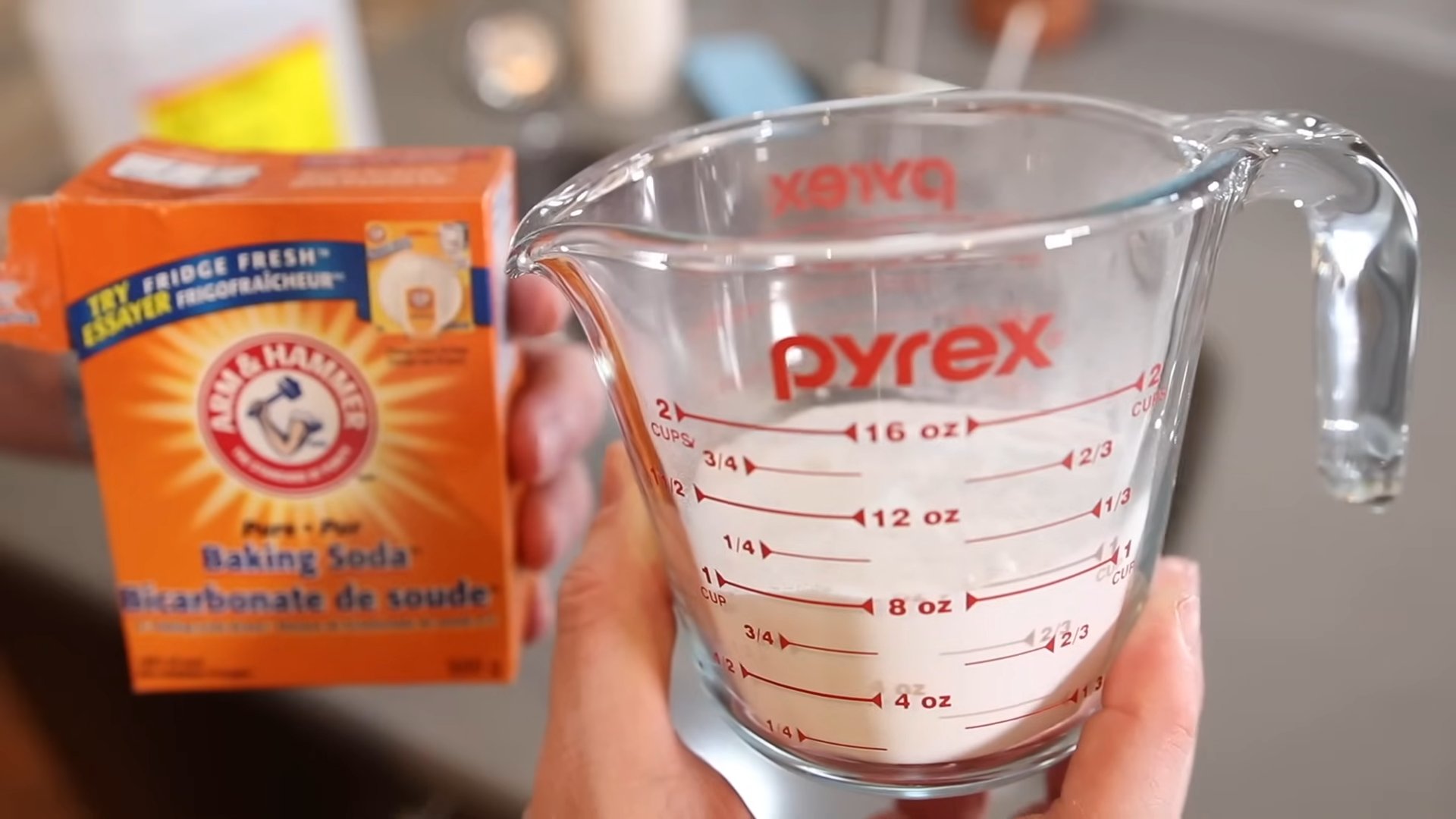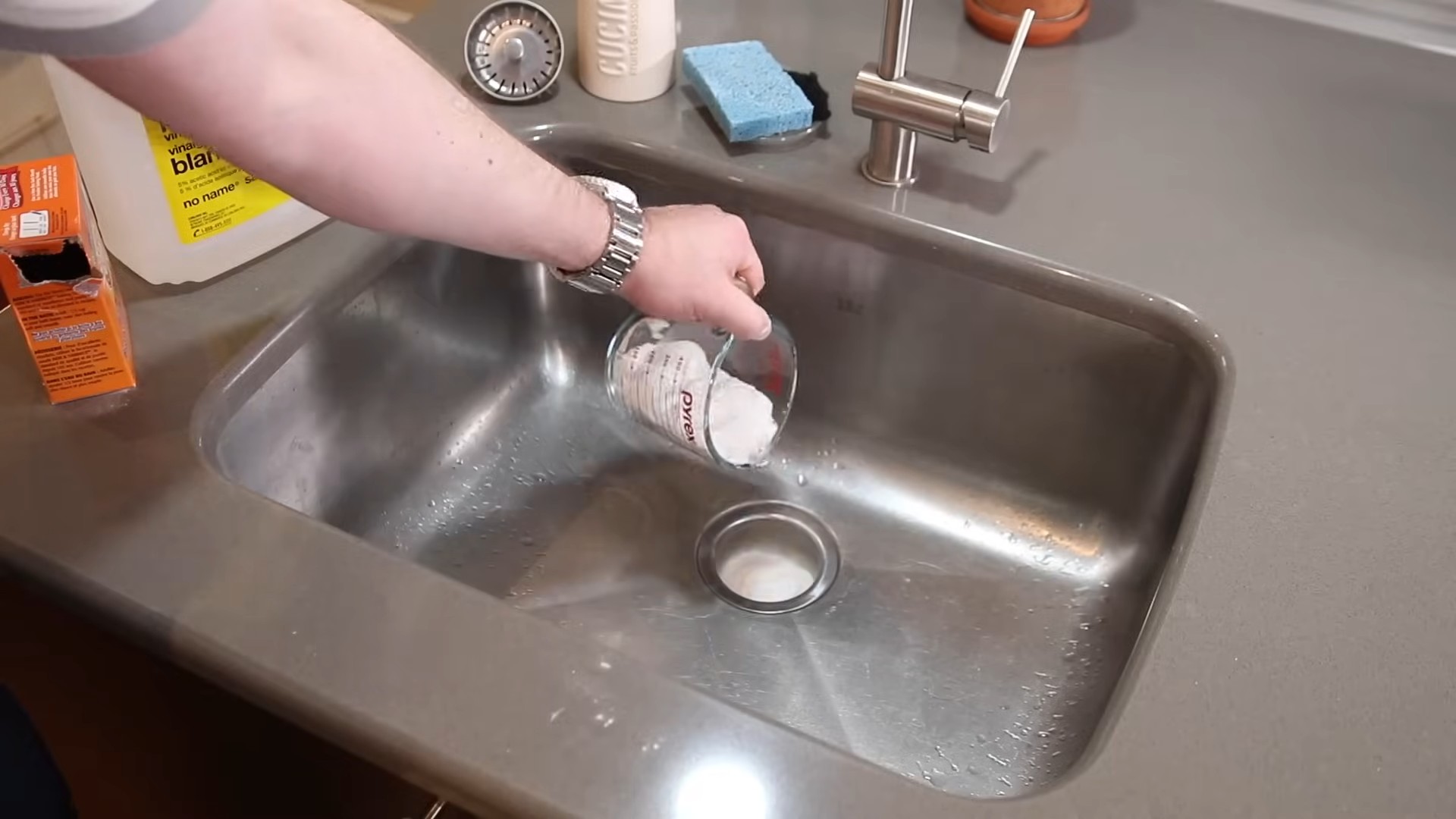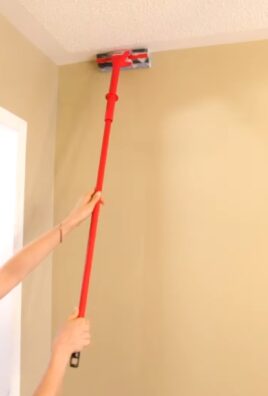Baking Soda Drain Cleaner: Are you tired of slow-draining sinks and the nasty chemicals that promise to fix them? I know I am! There’s nothing more frustrating than standing in ankle-deep water while brushing your teeth, right? But what if I told you there’s a simple, effective, and eco-friendly solution sitting right in your pantry?
For generations, baking soda has been a household staple, used for everything from baking delicious treats to freshening up refrigerators. Its versatility is truly remarkable! While its cleaning prowess might not be as widely celebrated as its culinary uses, it’s a secret weapon against clogged drains that our grandmothers likely knew all too well. Think of it as a time-tested remedy, passed down through families, now ready to save you a plumbing bill.
In today’s world, we’re all looking for ways to be more sustainable and save money. Harsh chemical drain cleaners can be expensive, harmful to the environment, and even dangerous to handle. That’s why learning how to make a baking soda drain cleaner is so essential. It’s a safe, natural, and cost-effective alternative that can tackle minor clogs and keep your drains flowing smoothly. Plus, it’s incredibly satisfying to solve a problem yourself with ingredients you already have on hand! So, let’s ditch the chemicals and embrace the power of baking soda for a cleaner, happier home.

DIY Baking Soda Drain Cleaner: Say Goodbye to Clogs!
Okay, so you’ve got a slow drain, or worse, a completely clogged one. Before you reach for those harsh chemical drain cleaners (which, let’s be honest, smell awful and can damage your pipes), let’s try a natural and effective solution: baking soda and vinegar! I’ve used this method countless times, and it’s saved me a ton of money and hassle. Plus, it’s much better for the environment.
Why Baking Soda and Vinegar Work
The magic lies in the chemical reaction. Baking soda (sodium bicarbonate) is a mild alkali, and vinegar (acetic acid) is, well, an acid. When they mix, they create carbon dioxide gas. This fizzing action helps to loosen and break down the gunk that’s causing the clog. It’s like a mini volcano erupting in your drain, but in a good way!
What You’ll Need
* 1 cup baking soda
* 1 cup white vinegar
* Hot water (a kettle or pot is ideal)
* A plunger (optional, but helpful for stubborn clogs)
* A spatula or spoon (for scooping baking soda)
* Eye protection (just in case!)
* Gloves (optional, but recommended if you’re sensitive to vinegar)
Step-by-Step Instructions: Unclogging Your Drain
1. Clear the Area: First things first, remove any standing water from the sink or tub. You want the baking soda and vinegar to directly target the clog, not just sit on top of water. If there’s a lot of water, you might need to bail it out with a cup or small container.
2. Pour in the Baking Soda: Using your spatula or spoon, carefully pour one cup of baking soda down the drain. Try to get as much of it down the drain as possible. Don’t worry if a little spills; just wipe it up.
3. Add the Vinegar: Now for the fun part! Slowly pour one cup of white vinegar down the drain after the baking soda. You should immediately hear fizzing and bubbling. This is the reaction we want!
4. Let it Fizz: Let the mixture fizz and bubble for at least 30 minutes. For really stubborn clogs, I sometimes let it sit for an hour or even overnight. The longer it sits, the more time it has to break down the clog. This is a crucial step, so don’t rush it!
5. Flush with Hot Water: After the waiting period, carefully pour a kettle or pot of very hot (but not boiling) water down the drain. The hot water helps to flush away the loosened debris. Be careful not to splash yourself with the hot water.
6. Check the Drain: Observe how quickly the water drains. If it’s draining faster, great! You’ve likely dislodged the clog. If it’s still slow or clogged, move on to the next step.
7. Plunge (If Necessary): If the drain is still slow, grab your plunger. Make sure there’s enough water in the sink or tub to cover the cup of the plunger. Create a tight seal around the drain opening and plunge vigorously for several minutes. The plunging action can help to dislodge any remaining debris.
8. Repeat if Needed: If the drain is still clogged after plunging, repeat the entire process from step 1. Sometimes, it takes a couple of tries to completely clear a stubborn clog. Don’t give up!
9. Prevention is Key: Once you’ve cleared the clog, take steps to prevent future clogs. Avoid pouring grease down the drain, and use a drain strainer to catch hair and other debris. I also like to flush my drains with hot water every week or so to keep them clear.
Dealing with Stubborn Clogs
Sometimes, the baking soda and vinegar method isn’t enough to tackle really tough clogs. Here are a few additional tips and tricks:
* Boiling Water: If hot water alone doesn’t do the trick, try using boiling water (carefully!). Boiling water can help to melt grease and break down other stubborn materials. However, be cautious when using boiling water, especially with PVC pipes, as it could potentially damage them. If you have older pipes, it’s best to stick to hot water.
* Baking Soda and Salt: For a slightly stronger cleaning action, try mixing baking soda with salt instead of vinegar. Use 1/2 cup of baking soda and 1/2 cup of salt, followed by hot water. The salt acts as an abrasive, helping to scrub the inside of the pipes.
* Wire Coat Hanger: If you suspect there’s a large object blocking the drain, you can try using a straightened wire coat hanger to fish it out. Bend a small hook at the end of the hanger and carefully insert it into the drain. Gently probe around to see if you can snag the object. Be careful not to push the object further down the drain.
* Enzyme Drain Cleaners: If natural methods aren’t working, consider using an enzyme drain cleaner. These cleaners use enzymes to break down organic matter, such as hair and food particles. They’re generally safer than chemical drain cleaners, but they may take longer to work.
Important Considerations
* Avoid Mixing with Chemical Drain Cleaners: Never mix baking soda and vinegar with chemical drain cleaners. The combination can create dangerous fumes and potentially damage your pipes. If you’ve already used a chemical drain cleaner, wait at least 24 hours before trying the baking soda and vinegar method.
* Protect Your Eyes and Skin: While baking soda and vinegar are generally safe, it’s always a good idea to wear eye protection and gloves when working with them. Vinegar can irritate the skin, and you don’t want to get any of the mixture in your eyes.
* Consider Your Pipes: If you have older or fragile pipes, be extra cautious when using hot water or plunging. Excessive force could potentially damage the pipes.
Preventative Measures: Keeping Your Drains Clear
The best way to deal with clogs is to prevent them from happening in the first place. Here are some preventative measures you can take:
* Use Drain Strainers: Install drain strainers in all of your sinks and tubs to catch hair, food particles, and other debris. Clean the strainers regularly to prevent buildup.
* Avoid Pouring Grease Down the Drain: Grease is a major culprit when it comes to clogged drains. Never pour grease down the drain. Instead, let it cool and solidify, then scrape it into the trash.
* Flush with Hot Water Regularly: Flush your drains with hot water every week or so to help prevent buildup.
* Don’t Overload the Garbage Disposal: Avoid putting large amounts of food waste down the garbage disposal at once. Cut food into smaller pieces and run plenty of water while the disposal is running.
* Consider a Professional: If you’ve tried all of these methods and your drain is still clogged, it may be time to call a professional plumber. They have the tools and expertise to diagnose and fix more complex plumbing problems.
Troubleshooting
* No Fizzing Action: If you don’t hear any fizzing when you add the vinegar, it could be that the baking soda is old or that the drain is already full of water. Try adding a little more baking soda and vinegar.
* Drain Still Clogged After Multiple Attempts: If you’ve repeated the process several times and the drain is still clogged, the clog may be too severe for this method. Consider trying a different method or calling a plumber.
* Bad Smell: If you notice a bad smell coming from the drain, it could be due to trapped food particles or bacteria. Try pouring a cup of baking soda down the drain, followed by a cup of lemon juice. Let it sit for 30 minutes, then flush with hot water.
I hope this guide helps you unclog your drain naturally and effectively! Remember to be patient, persistent, and always prioritize safety. Good luck!

Conclusion
So, there you have it! Ditching those harsh chemical drain cleaners and embracing the power of baking soda drain cleaner is not just a trend; it’s a smart, effective, and environmentally conscious choice for every homeowner. We’ve walked you through a simple, yet potent, method to unclog those pesky drains using ingredients you likely already have in your pantry.
Why is this a must-try? Because it works! It’s a gentle, yet powerful, fizzing action that breaks down grease, hair, and other common drain-clogging culprits without corroding your pipes or releasing harmful fumes into your home. Think of the money you’ll save on expensive plumbing calls and those harsh, store-bought chemicals. Plus, you’ll be contributing to a healthier environment by reducing your reliance on toxic products.
But the beauty of this DIY trick lies in its adaptability. Feeling adventurous? Boost the cleaning power by adding a few drops of your favorite essential oil, like tea tree or eucalyptus, for an extra antibacterial kick and a refreshing scent. For particularly stubborn clogs, you can repeat the process a second time or let the baking soda and vinegar mixture sit overnight before flushing with hot water. Another variation involves using washing soda (sodium carbonate) instead of baking soda (sodium bicarbonate) for a stronger cleaning action, but be sure to test it in an inconspicuous area first to ensure it doesn’t damage your pipes. You can also use lemon juice instead of vinegar, although it might be a bit less potent.
We understand that trying something new can be a little daunting, but trust us, this is one DIY project that’s well worth the effort. It’s quick, easy, and incredibly satisfying to watch that drain clear right before your eyes.
We wholeheartedly encourage you to give this baking soda drain cleaner method a try. You’ll be amazed at the results. And more importantly, we want to hear about your experience! Did it work for you? Did you try any variations? Share your stories, tips, and tricks in the comments below. Let’s build a community of DIY drain-cleaning experts and help each other keep our homes running smoothly and sustainably. Don’t forget to share this article with your friends and family so they can benefit from this simple yet effective solution too! Let’s ditch the chemicals and embrace the power of natural cleaning!
Frequently Asked Questions (FAQs)
What kind of baking soda should I use?
You should use regular baking soda, also known as sodium bicarbonate. This is the same baking soda you use for baking cakes and cookies. Make sure it’s fresh for the best results. Old baking soda might not fizz as effectively.
Can I use this method on all types of drains?
This method is generally safe for most types of drains, including those made of PVC, copper, and cast iron. However, if you have very old or fragile pipes, it’s always a good idea to test a small amount of the mixture in an inconspicuous area first to ensure it doesn’t cause any damage. If you are unsure about your pipes, consult a plumber.
How often can I use this baking soda drain cleaner method?
You can use this method as often as needed to maintain clear drains. For preventative maintenance, try using it once a month. If you have a recurring clog, you might need to use it more frequently. However, avoid using it excessively, as even natural ingredients can cause wear and tear over time.
What if the clog is really stubborn and the baking soda and vinegar don’t work?
For extremely stubborn clogs, you might need to try a few different approaches. First, repeat the baking soda and vinegar process a second time. If that doesn’t work, try using a plunger to dislodge the clog. You can also try using a drain snake or auger to physically remove the blockage. As a last resort, you may need to call a professional plumber.
Is it safe to mix baking soda and vinegar with other drain cleaners?
No! Never mix baking soda and vinegar with other drain cleaners, especially chemical drain cleaners. The combination can create dangerous fumes and potentially cause explosions. Always use baking soda and vinegar as a standalone solution. If you’ve already used a chemical drain cleaner, wait at least 24 hours and flush the drain thoroughly with water before attempting the baking soda and vinegar method.
Can I use hot water instead of boiling water?
While hot water is better than cold water, boiling water is more effective at dissolving grease and other clog-causing substances. Be careful when pouring boiling water, especially into porcelain sinks or toilets, as it can cause them to crack. If you’re concerned about damaging your fixtures, use very hot tap water instead.
Does the type of vinegar matter?
White vinegar is the most commonly used and recommended type of vinegar for cleaning drains. It’s inexpensive and readily available. However, you can also use apple cider vinegar, although it might not be as effective due to its lower acidity. Avoid using balsamic vinegar or other flavored vinegars, as they may contain sugars that can contribute to clogs.
How do I prevent future drain clogs?
Prevention is key to avoiding future drain clogs. Avoid pouring grease down the drain. Use drain screens to catch hair and other debris. Flush the drain with hot water after each use. Periodically use the baking soda and vinegar method as a preventative measure. And be mindful of what you’re putting down your drains in the first place.
Can I use this method to clean a clogged toilet?
Yes, you can use the baking soda and vinegar method to help unclog a toilet. Pour one cup of baking soda into the toilet bowl, followed by two cups of vinegar. Let it fizz for about 30 minutes, then flush the toilet. If the clog persists, you may need to use a plunger.
What are the environmental benefits of using baking soda drain cleaner?
Using baking soda drain cleaner is a much more environmentally friendly option compared to chemical drain cleaners. Chemical drain cleaners often contain harsh chemicals that can pollute waterways and harm aquatic life. Baking soda and vinegar are natural, biodegradable substances that are safe for the environment. By choosing this DIY method, you’re reducing your reliance on toxic products and contributing to a healthier planet.





Leave a Comment